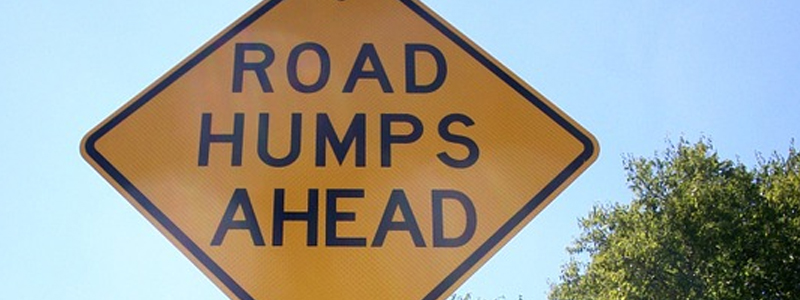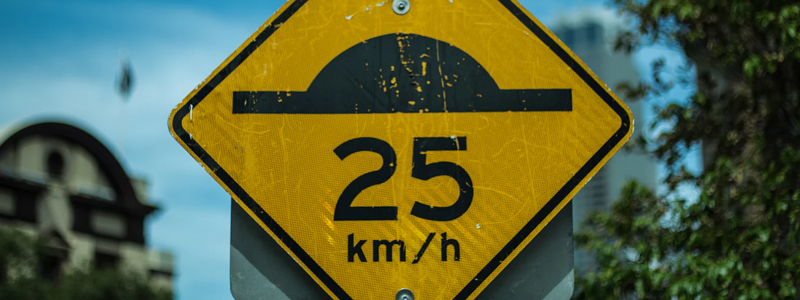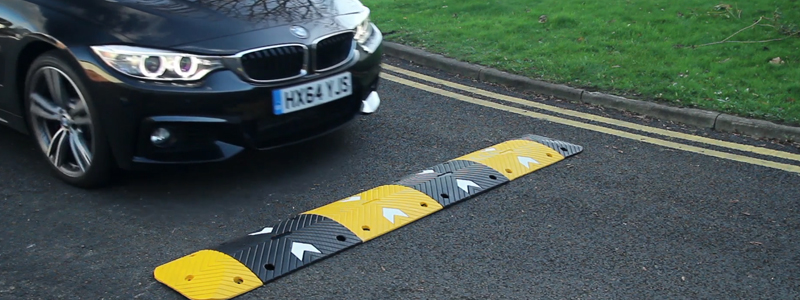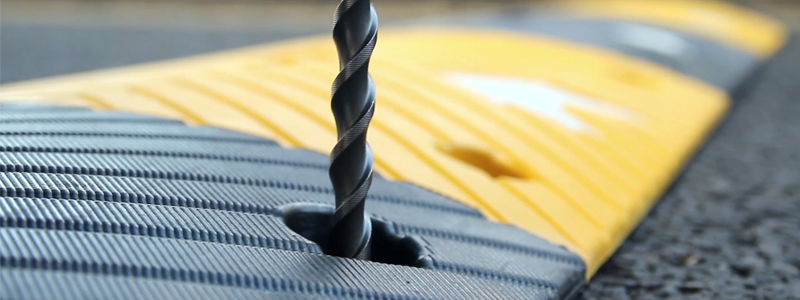
Speed Bump Regulations
Do you know what the Speed Bump Regulations are? Speed bumps can be used on both public and private roads to reduce traffic and accidents in problem areas. If your private road is being used as a shortcut or thoroughfare and is excessively busy, or you have noticed a lot of accidents and/or dangerous driving on your road then you might want to think about speed bumps. Councils and highway bodies will also take the initiative to install speed bumps typically in high-risk areas such as schools or roads with high pedestrian footfall.
While speed bumps can be used to make roads safer, they can potentially make areas even more dangerous if they’re not used correctly. The Highways (Road Humps) Regulations 1999 outlines some of the legal conditions that speed bumps need to meet to stay safe, while councils and other experienced bodies also outline some recommendations and best practices to ensure safety.


 There are additionally some best practices recommended by councils about the location of speed bumps, namely that an advanced speed-reducing feature should ideally be used to ensure as much as possible that the right speed is not exceeded when the speed bump is reached. For example, placing a speed bump near a junction, a sharp bend or narrowing the road and using give way marks to force a priority-working system can all help to ensure cars slow down to the right speed by the time they reach a speed bump.
If a side road leads into a road with road humps, then it is further recommended that the road hump should be met within between 40 and 70 metres depending on traffic flow. For a system of road humps, it’s best practice to leave between 20 and 150 metres between them with 70 metres typically being the best distance depending on the average speed needed to be achieved for the road.
There are additionally some best practices recommended by councils about the location of speed bumps, namely that an advanced speed-reducing feature should ideally be used to ensure as much as possible that the right speed is not exceeded when the speed bump is reached. For example, placing a speed bump near a junction, a sharp bend or narrowing the road and using give way marks to force a priority-working system can all help to ensure cars slow down to the right speed by the time they reach a speed bump.
If a side road leads into a road with road humps, then it is further recommended that the road hump should be met within between 40 and 70 metres depending on traffic flow. For a system of road humps, it’s best practice to leave between 20 and 150 metres between them with 70 metres typically being the best distance depending on the average speed needed to be achieved for the road.


Informing people
Before installing speed bumps, it is a legal requirement to inform and consult with the chief officer of police and emergency services such as fire brigade and ambulance services. Emergency services will need to change their route or inform the relevant people and if the road in question is a main and only route for emergency services the speed hump system may not possible. It’s also a legal requirement to inform any organisations or groups representing people that may be affected by the speed hump system such as bus operators, transport services and residents or traders in the street. If you’re on a private road and are planning on installing speed humps you should inform and consult with other residents on your street to make sure they approve of the plans.Dimensions
All roads are different, and you may need different speed bump lengths depending on the carriageway, but all speed bumps must be a minimum of 900mm in length according to The Highways (Road Humps) Regulations 1999. The height of speed humps must also be a minimum of 25mm but no more than 100mm at the highest point. Additionally, no vertical face of any material forming part of the speed hump should exceed 6mm measured vertically from top to bottom of that face. To ensure safety and limit the possibility of vehicle grounding, speed bumps should also not be at a steeper gradient than 1:10. You may need to look at shallower gradients depending on other considerations such as the presence of buses, whether emergency services use the route regularly, the incline of the road and so on. Severe speed bumps that reduce car speeds to 10mph or less may only be used on private roads and are not permitted on public highways.
Location
Speed humps can only be constructed on roads with a speed limited of 30mph or less. The Highways (Road Humps) Regulations 1999 also outlines other location conditions for speed humps. Generally, they should not be placed within 30 metres of a zebra-controlled area including a pelican or puffin crossing, however flat speed bumps can be used as the zebra crossing itself or on the limits of the crossing when constructed by highway bodies. The speed bump regulations state that a road hump may be constructed so that an imaginary line running through the centre length of the road hump from one side of the road to the other may be in line with an imaginary line running through the centre of the zebra crossing patterns or the centre of the crossing limits. For roads that are in a zone with a speed higher than 20mph, the speed bump must also be positioned at a right angle to an imaginary line running along the centre of the carriageway. The speed bump regulations further prohibit speed bumps from being placed:- On a railway level crossing or within 20 metres of any rail forming part of the railway track at the crossing.
- Within 2 metres of any rail providing support and guidance for vehicles carried on flanged wheels.
- Under or within 25 metres of any part of a structure over a carriageway which is 6.5metres high or less from the surface of the carriageway, although this regulation does not apply if the road hump is in a zone 20mph or under.
- Above or within 25 metres of any part of a bridge over which the highway passes or any part of a tunnel, culvert or other similar structure which crosses beneath the highway although this regulation does not apply if the road hump is in a zone 20mph or under.
 There are additionally some best practices recommended by councils about the location of speed bumps, namely that an advanced speed-reducing feature should ideally be used to ensure as much as possible that the right speed is not exceeded when the speed bump is reached. For example, placing a speed bump near a junction, a sharp bend or narrowing the road and using give way marks to force a priority-working system can all help to ensure cars slow down to the right speed by the time they reach a speed bump.
If a side road leads into a road with road humps, then it is further recommended that the road hump should be met within between 40 and 70 metres depending on traffic flow. For a system of road humps, it’s best practice to leave between 20 and 150 metres between them with 70 metres typically being the best distance depending on the average speed needed to be achieved for the road.
There are additionally some best practices recommended by councils about the location of speed bumps, namely that an advanced speed-reducing feature should ideally be used to ensure as much as possible that the right speed is not exceeded when the speed bump is reached. For example, placing a speed bump near a junction, a sharp bend or narrowing the road and using give way marks to force a priority-working system can all help to ensure cars slow down to the right speed by the time they reach a speed bump.
If a side road leads into a road with road humps, then it is further recommended that the road hump should be met within between 40 and 70 metres depending on traffic flow. For a system of road humps, it’s best practice to leave between 20 and 150 metres between them with 70 metres typically being the best distance depending on the average speed needed to be achieved for the road.
Lighting
Regulations for lighting near speed bumps are only applicable to roads where the speed is above 20mph. In these higher speed roads and public highways, it is a legal requirement to provide adequate lighting. This could be a system of at least 3 electric street lamps placed no more than 38 metres apart, or any other system of lighting that complies either with the British Standard for Road Lighting or any other equivalent standard or code. Although it is not a legal requirement, it is recommended that where possible individual humps are placed under or close to a street light to ensure visibility for drivers.






